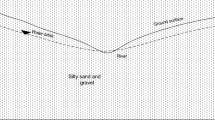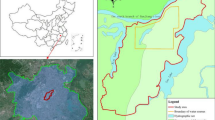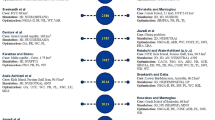Abstract
Evolving optimal management strategies are essential for the sustainable development of water resources. A coupled simulation-optimization model that links the simulation and optimization models internally through a response matrix approach is developed for the conjunctive use of groundwater and surface water in meeting irrigation water demand and municipal water supply, while ensuring groundwater sustainability and maintaining environmental flow in river. It incorporates the stream-aquifer interactions, and the aquifer response matrix is generated from a numerical groundwater model. The optimization model is solved by using MATLAB. The developed model has been applied to the Hormat-Golina valley alluvial stream-aquifer system, Ethiopia, and the optimal pumping schedules were obtained for the existing 43 wells under two different scenarios representing with and without restrictions on stream flow depletion, and satisfying the physical, operational and managerial constraints arising due to hydrological configuration, sustainability and ecological services. The study reveals that the total annual optimal pumping is reduced by 19.75 % due to restrictions on stream flow depletion. It is observed that the groundwater pumping from the aquifer has a significant effect on the stream flow depletion and the optimal conjunctive water use plays a great role in preventing groundwater depletion caused by the extensive pumping for various purposes. The groundwater contribution in optimal conjunctive water use is very high having a value of 92 % because of limited capacity of canal. The findings would be useful to the planners and decision makers for ensuring long-term water sustainability.







Similar content being viewed by others
Data Availability
Some or all data that support the findings are available from the corresponding author upon reasonable request.
References
Anderson MP, Woessner WW (1992) Applied groundwater modeling: simulation of flow and advective transport. Academic, San Diego
Barlow PM, Ahlfeld DP, Dickerman DC (2003)Conjunctive-management models for sustained yield of stream-aquifer systems. J Water Resour Plan Manage 129(1):35–48
Belaineh GR, Peralta C, Hughes TC (1999) ) Simulation/optimization modeling for water resources management. J Water Resour Plan Manage 125:154–161
Coleman T, Branch MA, Grace A (1999) Optimization toolbox for Use with MATLAB. The MathWorks, Inc
De Fraiture C, Wichelns D (2010) Satisfying future water demands for agriculture. Agric Water Manag 97(4):502–511
Dogan MS, Buck I, Medellin-Azuara J, Lund JR (2019) Statewide effects of ending long-term groundwater overdraft in California. J Water Resour Plan Manag 145(9):04019035
Doorenbos J, Pruitt WJ (1977) Guidelines for predicting crop water requirements. FAO Irrigation and Drainage Paper 24. Food and Agricultural Organization of the United Nations, Rome
Flores L, Bailey RT, Kraeger-Rovey C (2020) Analyzing the effects of groundwater pumping on an urban stream‐aquifer system. JAWRA Journal of the American Water Resources Association 56(2):310–322
Huang CS, Yang T, Yeh HD (2018) Review of analytical models to stream depletion induced by pumping: Guide to model selection. J Hydrol 561:277–285
Kahil MT, Dinar A, Albiac J (2015) Modeling water scarcity and droughts for policy adaptation to climate change in arid and semiarid regions. J Hydrol 522:95–109
Kamali A, Niksokhan MH (2017)Multi-objective optimization for sustainable groundwater management by developing of coupled quantity-quality simulation-optimization model. J Hydroinformatics 19(6):973–992
Kerebih MS, Keshari AK (2016)GIS-Coupled numerical modeling for sustainable groundwater development: Case study of Aynalem well field. Ethiopia J Hydrol Eng 22(4):05017001–05017001
Keshari AK, Datta B (1996) Integrated optimal management of groundwater pollution and withdrawal. Ground Water 34(1):104–113
Keshari AK, Datta B (1996) Multiobjective management of a contaminated aquifer for agricultural use. Water Resour Manag 10(5):373–395
Liu L, Cui Y, Luo Y (2013) Integrated modeling of conjunctive water use in a canal well irrigation district in the lower Yellow River Basin, China. J Irrig Drain Eng 139:775–784
Maddock T III (1972) Algebraic technological from a simulation model. Water Resour Res 8(1):129–134
Mamo S (2007) Raya hydrogeology and isotope hydrological investigation project. Final Report, Ministry of Mines and Energy Geological Survey of Ethiopia
Mays LW (2013) Groundwater resources sustainability: past, present, and future. Water Resour Manage 27(13):4409–4424
McDonald MG, Harbaugh AW (1988) A modular three dimensional finite difference ground-water flow model. U.S. Geological Survey Open-File Rep.83–875, 768 U.S. Geological Survey, Washington, D.C
Perea RG, Moreno MA, da Silva Baptista VB, Córcoles JI (2020) Decision support system based on genetic algorithms to optimize the daily management of water abstraction from multiple groundwater supply sources. Water Resour Manag 34:4739–4755
Refsgaard JC, Højberg AL, Møller I, Hansen M, Søndergaard V (2010) Groundwater modeling in integrated water resources management-visions for 2020. Groundwater 48(5):633–648
Safavi HR, Darzi F, Mariño MA (2010)Simulation-optimization modeling of conjunctive use of surface water and groundwater. Water Resour Manag 24(10):1965–1988
Sedki A, Ouazar D (2011)Simulation-optimization modeling for sustainable groundwater development: A Moroccan Coastal aquifer case Study. Water Resour Manage 25:2855–2875
Smith M (1992) CROPWAT: A computer program for irrigation planning and management. FAO Irrigation and Drainage Paper 46, Rome, Italy
Acknowledgements
The authors wish to express their thanks to the National Ministry of Water and Energy, Meteorology Agency of Ethiopia, and Kobo Valley Development Project Office for providing the necessary data free of charge. The financial support for the field visit from Debre Markos University is also gratefully acknowledged.
Funding
Partial financial support for field visit was received from Debre Markos University.
Author information
Authors and Affiliations
Contributions
All authors contributed to the study conception and design. Material preparation, data collection and analysis were performed by first author (Mulu Sewinet Kerebih). Drafting the work or revising it critically for important intellectual contents was carried out by second author (Proff. Ashok. K. Keshari). All authors read and approved the final manuscript.
Corresponding author
Ethics declarations
Ethical Approval
The manuscript is original and has not been submitted elsewhere for the consideration. Results are presented clearly, honestly, and without fabrication, falsification or inappropriate data manipulation. No data, text, or theories by others are presented.
Consent to Publish
Not applicable.
Conflict of Interest
The authors have no conflicts of interest.
Consent to Participate
Not applicable.
Additional information
Publisher’s Note
Springer Nature remains neutral with regard to jurisdictional claims in published maps and institutional affiliations.
Rights and permissions
About this article
Cite this article
Kerebih, M.S., Keshari, A.K. Distributed Simulation‐optimization Model for Conjunctive Use of Groundwater and Surface Water Under Environmental and Sustainability Restrictions. Water Resour Manage 35, 2305–2323 (2021). https://doi.org/10.1007/s11269-021-02788-5
Received:
Accepted:
Published:
Issue Date:
DOI: https://doi.org/10.1007/s11269-021-02788-5




